

Tesla Model 3
Tesla Model 3 owner targeted in road rage “coal roll” attack, caught on TeslaCam
An owner of a Tesla Model 3 Performance variant fell victim to a “coal roll” attack from a large diesel truck early Friday morning, showing the ongoing hatred of electric cars from some drivers of traditional combustion engine vehicles is still very much alive.
“Coal rolling” is a practice used by diesel truck owners where they emit excessive amounts of diesel fuel into their vehicle’s engine in order to produce large amounts of black smoke in the air. The act is usually identified as a form of “anti-environmentalism” because it requires illegal modifications to a vehicle’s emissions equipment to be performed.
Jeff Mahin was driving to work on his normal commute route on I-95 near Downtown Miami. Suddenly, a lifted Ford truck overtook Mahin’s Model 3 Performance from the left-hand side, before stepping on the gas and unnecessarily blowing petrol-based smoke in front of the electric sedan. Mahin tried to maneuver away from the truck, but unfortunately, the truck was not finished. The driver of the Ford cut off multiple vehicles in an attempt to get in front of Mahin’s Model 3, successfully coal rolling him once again. In the 39-second Tesla Dashcam clip Mahin uploaded to YouTube, he was cut off and coal rolled a total of four times, making it completely apparent the driver of the truck had a serious issue with the electric vehicle he was sharing the road with.
Thanks to Mahin’s Model 3’s dashcam, he was able to share the incident on YouTube and hopes it will bring some light to the fact that rolling coal is dangerous to not only drivers who are targeted, but to anyone else on the road as well. Mahin believes he was the victim of this attack due to his vehicle not being powered by petroleum-based fuels. “I just could not believe how far out of his way he went to try to blow smoke on me,” Mahin said. “I went into the right lane to avoid him and he risked his life and other lives to not use his blinker and shoot across lanes to continue to try to blind me with smoke.”
The act of rolling call was deemed illegal by the Environmental Protection Agency (EPA) in 2014, as they stated it is a direct violation of the United States’ Clean Air Act of 1963. Furthermore, the EPA has stated on its website it is illegal to purchase or install “a part for a motor vehicle that bypasses, defeats, or renders inoperative any emission control device [and] prohibits anyone from tampering with an emission control device on a motor vehicle by removing it or making it inoperable prior to or after the sale or delivery to the buyer.” In response to the growing popularity of coal rolling, seven states in the U.S. have stated the act of rolling coal is either illegal or extremely frowned upon.
Dashcam and Sentry Mode have fortunately captured many incidents of vandalism against Tesla vehicles in the past. While this incident, in particular, did not lead to any accidents or damage to anyone’s vehicle, the act of rolling coal is dangerous as it limits visibility to those who are targeted. Thankfully, no person was hurt during the act either. “I am just glad my children were not in the car,” Mahin said.
You can watch Jeff Mahin’s Model 3 Performance being attacked by a truck through the act of coal rolling below:

News
Tesla Model 3 and Model Y dominate China’s real-world efficiency tests
The Tesla Model 3 posted 20.8 kWh/100 km while the Model Y followed closely at 21.8 kWh/100 km.
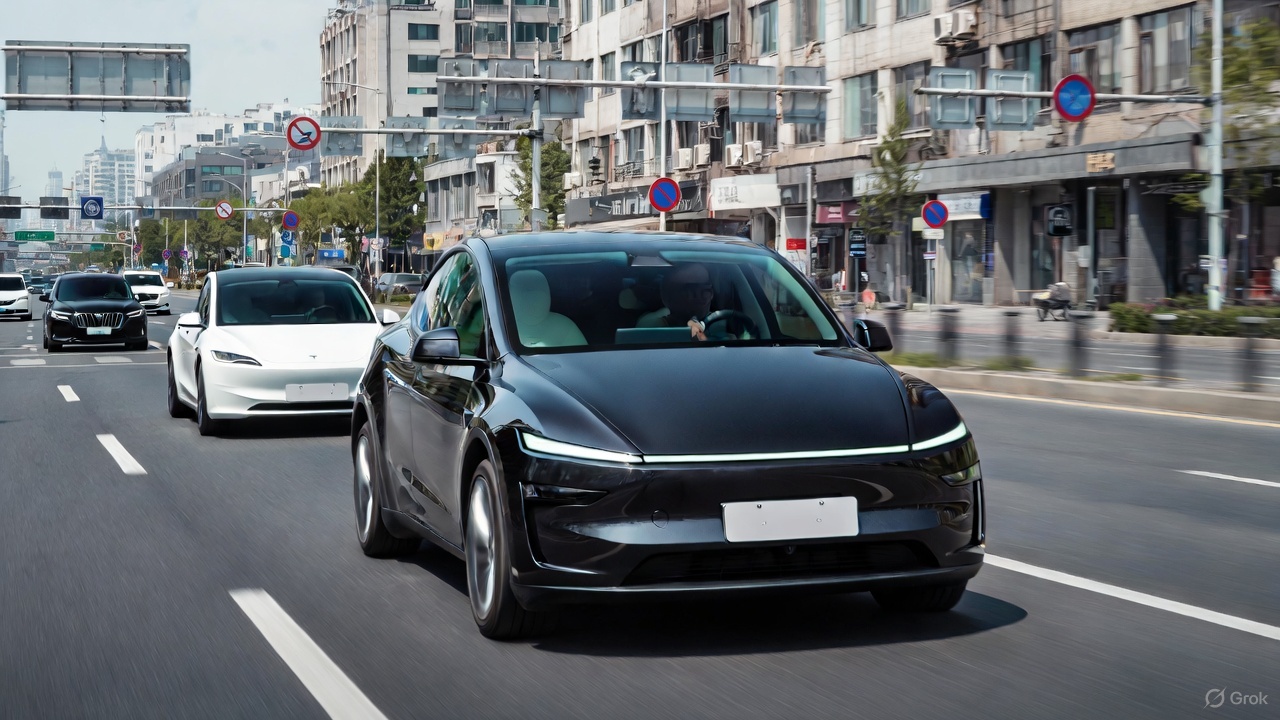
Tesla’s Model 3 and Model Y once again led the field in a new real-world energy-consumption test conducted by China’s Autohome, outperforming numerous rival electric vehicles in controlled conditions.
The results, which placed both Teslas in the top two spots, prompted Xiaomi CEO Lei Jun to acknowledge Tesla’s efficiency advantage while noting that his company’s vehicles will continue refining its own models to close the gap.
Tesla secures top efficiency results
Autohome’s evaluation placed all vehicles under identical conditions, such as a full 375-kg load, cabin temperature fixed at 24°C on automatic climate control, and a steady cruising speed of 120 km/h. In this environment, the Tesla Model 3 posted 20.8 kWh/100 km while the Model Y followed closely at 21.8 kWh/100 km, as noted in a Sina News report.
These figures positioned Tesla’s vehicles firmly at the top of the ranking and highlighted their continued leadership in long-range efficiency. The test also highlighted how drivetrain optimization, software management, and aerodynamic profiles remain key differentiators in high-speed, cold-weather scenarios where many electric cars struggle to maintain low consumption.
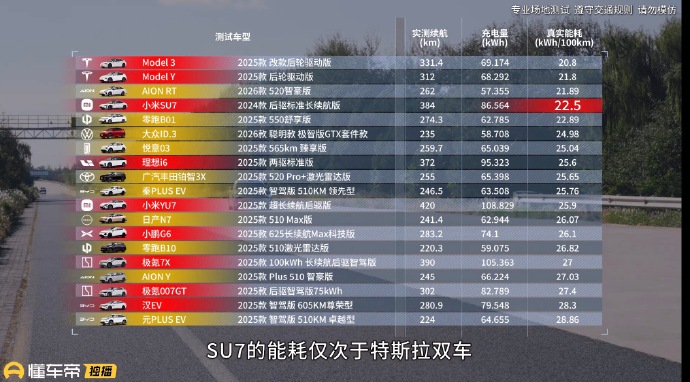
Xiaomi’s Lei Jun pledges to continue learning from Tesla
Following the results, Xiaomi CEO Lei Jun noted that the Xiaomi SU7 actually performed well overall but naturally consumed more energy due to its larger C-segment footprint and higher specification. He reiterated that factors such as size and weight contributed to the difference in real-world consumption compared to Tesla. Still, the executive noted that Xiaomi will continue to learn from the veteran EV maker.
“The Xiaomi SU7’s energy consumption performance is also very good; you can take a closer look. The fact that its test results are weaker than Tesla’s is partly due to objective reasons: the Xiaomi SU7 is a C-segment car, larger and with higher specifications, making it heavier and naturally increasing energy consumption. Of course, we will continue to learn from Tesla and further optimize its energy consumption performance!” Lei Jun wrote in a post on Weibo.
Lei Jun has repeatedly described Tesla as the global benchmark for EV efficiency, previously stating that Xiaomi may require three to five years to match its leadership. He has also been very supportive of FSD, even testing the system in the United States.
News
Tesla Model 3 and Model Y named top car buys in Norway
Despite growing competition from European and Korean brands, both models stood out for their balance of price, performance, and everyday usability.
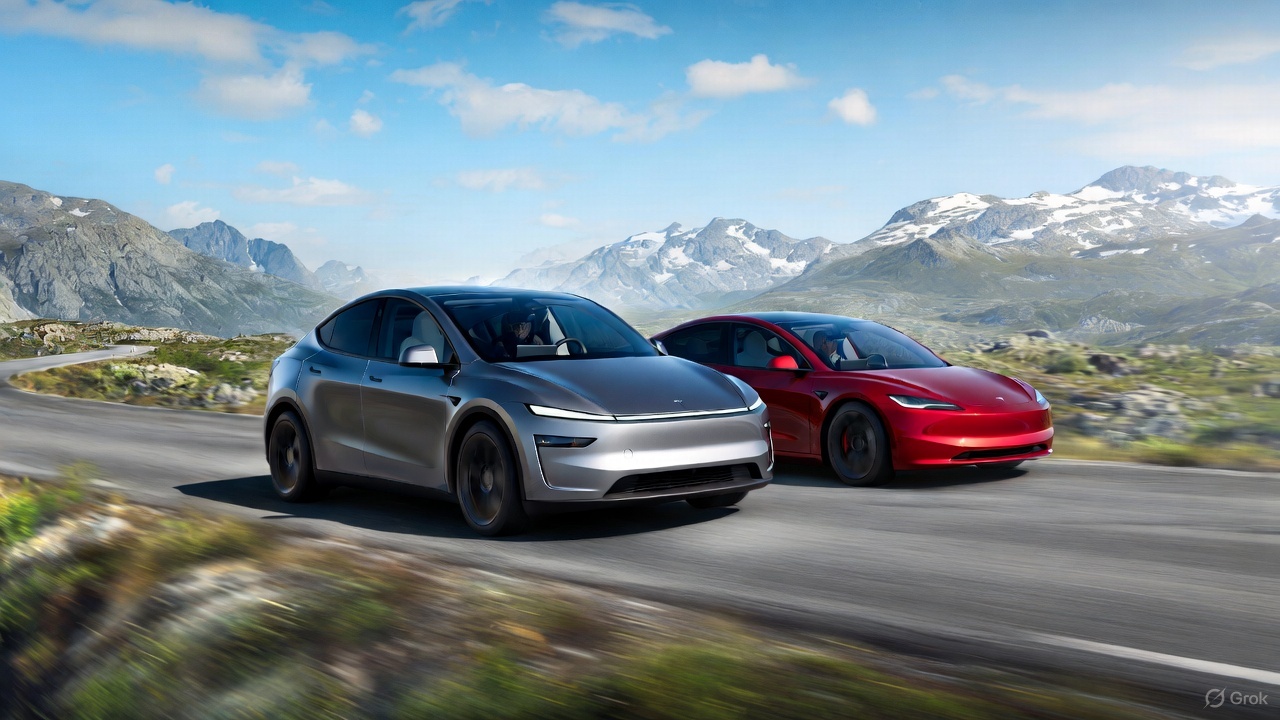
Norway’s annual roundup of the best car purchases featured Tesla’s two main sellers this year, with the Model 3 and Model Y securing top positions in their respective segments.
Despite growing competition from European and Korean brands, both models stood out for their balance of price, performance, and everyday usability. The verdict comes as electric vehicle adoption remained above 95% of new vehicle sales in the country.
Tesla Model 3 strengthens its value position
Among compact EVs, the Tesla Model 3 maintained its position as the best overall buy thanks to its strong blend of performance, efficiency, and updated features. Reviewers noted that every trim offered compelling value, especially with the all-electric sedan’s improved cabin ergonomics and the return of the turn-signal stalk, which was one of the few previous complaints among drivers.
The Model 3’s mix of long-range capability, low operating costs, and responsive handling has continued to set the benchmark for compact EVs in Norway. While competitors from Hyundai, Volkswagen, and Peugeot have narrowed the gap, Tesla’s price-to-capability ratio has remained difficult to beat in this segment, Motor.no reported.
“The Model 3 clearly offers the best value for money in the compact class, no matter which version you choose. Now it also gets the turn signal lever back. This eliminates one of the few flaws in a driving environment that many believe is the best on the market,” the publication wrote.
Tesla Model Y claims its crown
The Tesla Model Y emerged as Norway’s top family-car purchase this year. The latest refresh introduced improvements in ride quality, styling, and interior materials, allowing the Model Y to deliver a more premium driving experience without a substantial price increase.
Reviewers praised its spacious cabin, strong safety profile, and practical range, all of which reinforced its appeal for families needing an all-purpose electric crossover. The Model Y remains especially notable given its continued popularity in Norway even as Tesla faces declining sales in other global markets.
“The Model Y is back as the winner in the family class. The upgrade in the new year was even more extensive than expected. It is a slightly more elegant and significantly more comfortable Model Y that solidifies its position as Norway’s best car purchase in the most important class,” the Norwegian motoring publication noted.
News
Tesla axed one of the Model Y’s best features in ‘Standard’ trims: here’s why
Lars Moravy explains why Tesla chose to go with a glass roof in the new Standard trims, despite it not being visible.
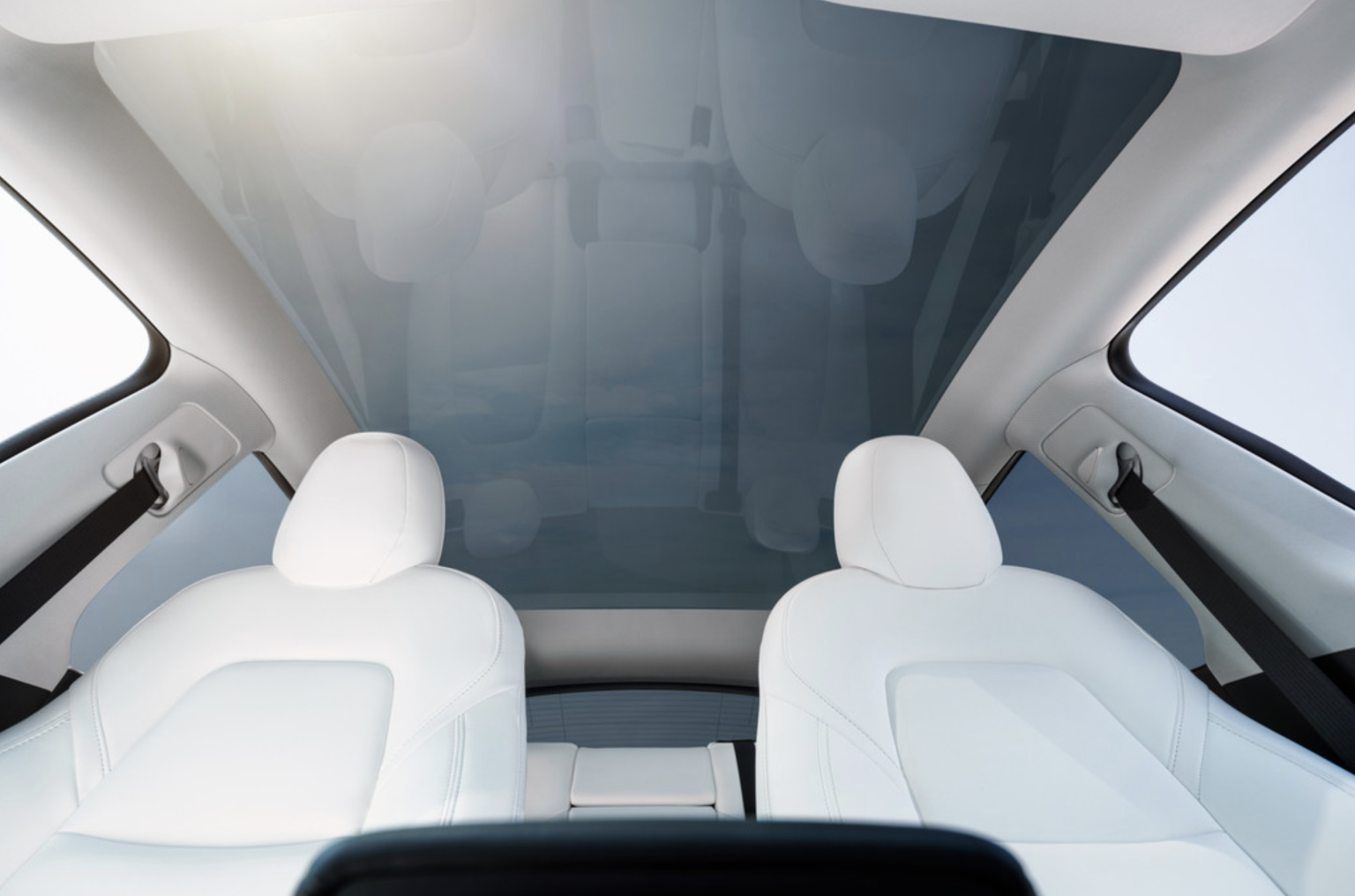
Tesla chose to implement a glass roof on the new Model Y ‘Standard’, despite the fact that you won’t be able to see it from the inside.
In the new Model Y ‘Standard’ configuration, one of the biggest changes is the lack of a glass roof, which is one of the more unique features Tesla offers.
How Tesla’s Standard models will help deliveries despite price disappointment
The entire roof of the Model Y’s ‘Premium’ and Performance trims is glass, giving everyone in the car an astounding view of the sky.
However, Tesla chose to cover this up in the new ‘Standard’ trim level. Here’s a look at it:
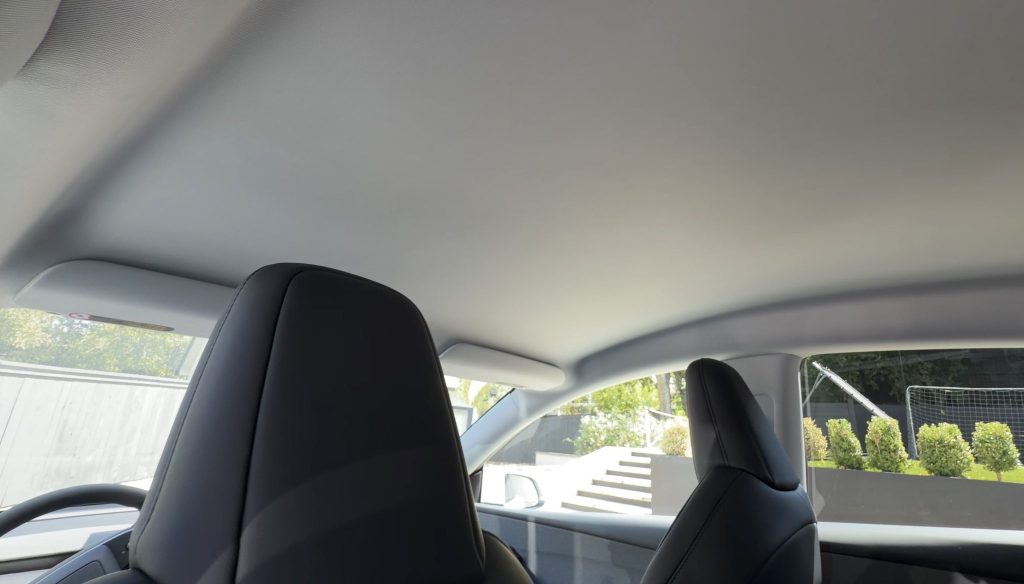
Credit: ItsKimJava | X
Despite it not being visible from the inside, the roof is still made of glass. It is only visible from the outside. Even if you removed the headliner in the Model Y ‘Standard,’ you would not be able to see the outside, because the glass is opaque:
Fun fact about the Standard Model Y closed glass roof. A Tesla engineer told us that the glass is opaque, so even if you removed the textile lining on the inside, you would not see the outside. 😔 More details to come on our first drive video this Friday. pic.twitter.com/N4uZFlblBB
— Kim Java (@ItsKimJava) October 8, 2025
Tesla’s Vice President of Powertrain, Lars Moravy, commented on the use of glass in the Premium models and how it differs from the glass in the Standard trims:
“All glass is NOT created equal. Remember, the Model Y Premium glass is laminated with silver IR reflective coatings to make it super comfy and reject solar load… the standard is not… plus LOTS of people wanted a closed headliner, always trying to listen (and improve road noise at the same time).”
The decision to cover up the glass while still using it was an efficiency choice. Moravy said Tesla chose to keep the glass for the new Standard models due to “cost, supply chain, and manufacturing efficiency.”
Cost, supply chain and manufacturing efficiency in our factories
— Lars (@larsmoravy) October 9, 2025
Tesla launched the Standard models on Tuesday. The cars were effectively a counter to the loss of the $7,500 EV tax credit.








